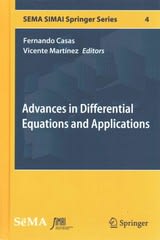Question
( x 9) 2 dx A certain vehicle can accelerate from a standing start to a speed of v ( t ) = 0.24 t
(x 9)2dx
A certain vehicle can accelerate from a standing start to a speed of
v(t) = 0.24t2 + 12t
feet per second after t seconds (for
0 t < 30).
(a)Find a formula for the distance that it will travel from its starting point in the first t seconds. [Hint: Integrate velocity to find distance, and then use the fact that distance is 0 at time
t = 0.]
D(t) =
(b)Use the formula that you found in part (a) to find the distance (in ft) that the car will travel in the first 10 seconds. (Round your answer to the nearest whole number.)
D(10) = ft
Find the indefinite integral. (Use C for the constant of integration.)
e0.5x dx
Find the indefinite integral. (Use C for the constant of integration. Remember to use absolute values where appropriate.)
9dx/x
Find the indefinite integral. [Hint: Use some algebra first.] (Use C for the constant of integration. Remember to use absolute values where appropriate.)
(x-4)^3/x dx
World consumption of a certain metal is running at the rate of 325e0.02tthousand metric tons per year, where t is measured in years and t = 0 corresponds to 2014.
(a) Find a formula for the total amount of the metal that will be consumed within t years of 2014. C(t) =
(b) When will the known world resources of 4100 thousand metric tons of the metal be exhausted? (Round your answer up to the next year.)
Use a definite integral to find the area under the curve between the given x-values.
f(x) =3/x from x = 1 to x = 9
=square units
On a hot summer afternoon, a city's electricity consumption is 3t2 + 12t + 10 units per hour, where t is the number of hours after noon (0 t 6). Find the total consumption of electricity between the hours of 1 p.m. and 4 p.m. units
Find the average value of the function over the given interval. f(t) = e0.08t on [0, 10]
In 2000 the birthrate in a certain area increased from 16e0.02t million births per year to 22e0.02t million births per year, where t is the number of years since 2000.
Find the total increase in population (in millions) that will result from this higher birth rate between 2000 (t = 0) and 2050 (t =50).
(Round your answer to the nearest whole number.)
million
Step by Step Solution
There are 3 Steps involved in it
Step: 1

Get Instant Access to Expert-Tailored Solutions
See step-by-step solutions with expert insights and AI powered tools for academic success
Step: 2

Step: 3

Ace Your Homework with AI
Get the answers you need in no time with our AI-driven, step-by-step assistance
Get Started


